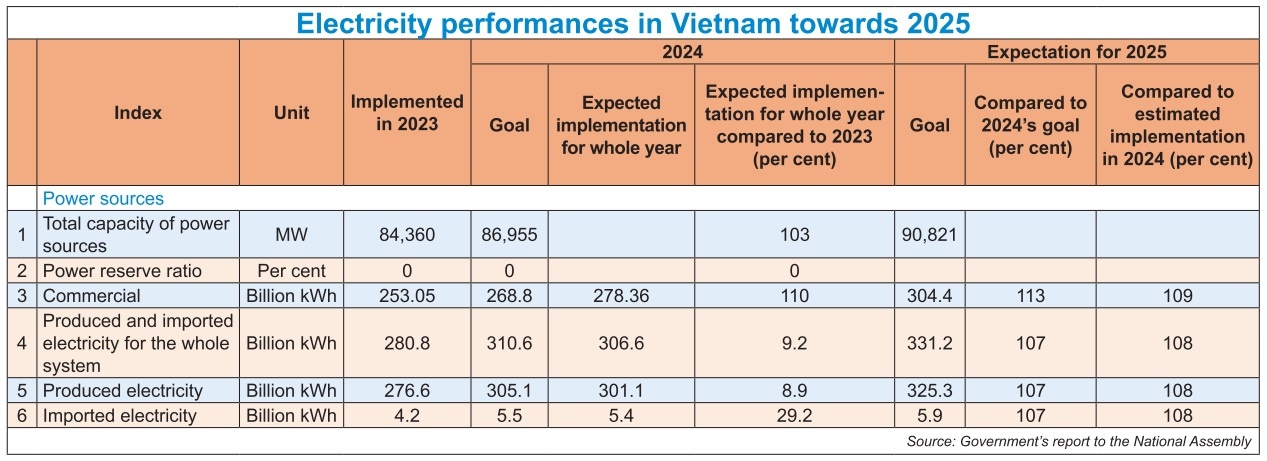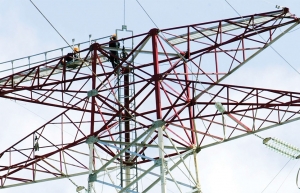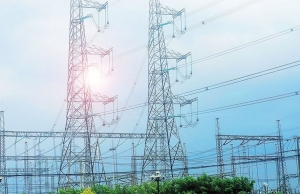Power projects and demand addressed
Under the National Assembly’s (NA) resolution on Vietnam’s Plan for Socioeconomic Development in 2025, adopted nearly two weeks ago, the country aims for an economic growth rate of 7-7.5 per cent, higher than this year’s projected 6.5-7 per cent. Per capita income is expected to reach $4,900, up from an estimated $4,647 in 2024, while the ratio of manufacturing and processing in GDP will remain at 24.1 per cent.
 |
| Strong economic development is partly responsible for the anticipated rise in power demand |
Prime Minister Pham Minh Chinh reported to the NA that ensuring the provision of critical resources, particularly electricity and fuel, will be key to achieving these targets.
“The government and the prime minister have been actively directing relevant authorities to ensure sufficient electricity supply under all circumstances,” PM Chinh said.
Vietnam’s rapid economic development has led to an anticipated increase in power demand, estimated at 12-13 per cent in 2025 and expected to rise further in subsequent years. To meet this demand, the government has focused on removing obstacles to electricity infrastructure development and expediting the construction of smart power grids that feature advanced automation and flexibility.
Boosting power projects
The government will also focus on completing procedures, commencing construction of large-scale liquefied natural gas (LNG) projects such as at Nghi Son (1,500MW) in the north-central province of Thanh Hoa, and at Quynh Lap (1,500MW) in the central province of Nghe An.
It is expected that in 2025, there will be some new power projects coming into operation, with total capacity of about 8,100MW. These include Nhon Trach 3 and 4, Vung Ang 2, LNG Quang Ninh (1,500MW), LNG Thai Binh (1,500MW), Quang Trach 1 (1,430MW), and expanded Hoa Binh hydropower facilities.
The Hoa Binh project, commencing construction in 2021, embraces a total investment of about $384.2 million. Power generation progress of Unit 1 is expected in June 2025 and Unit 2 is expected the following month. The project is slated for completion in August 2025, hoping to annually generate about 500 million kWh for the national electricity system.
In August, the 500kV transmission line project from Quang Trach to Pho Noi was inaugurated and put into operation. This project has total investment capital of about $916 million from the National Power Transmission Corporation under state-run Vietnam Electricity (EVN).
The starting point is the 500kV Quang Trach switchyard in the central province of Quang Binh, and the ending point is 500kV Pho Noi substation in the northern province of Hung Yen. This project is of strategic importance to national energy security, contributing to help reduce power shortage in the northern region of the country.
“This project must be exemplified for directions to develop other electricity projects,” PM Chinh noted. “Responsibility of those who are in charge of investment decision-making must be enhanced. “All projects must be implemented without disconnection.”
EVN has reported notable growth in electricity production and supply during the first 10 months of 2024. Total electricity output, including both domestic production and imports, reached an estimated 258.7 billion kWh, an on-year increase of 10.6 per cent. Electricity supplied to industrial and construction sectors increased by 10.5 per cent, while commercial and service activities saw a nearly 12 per cent rise, and household consumption grew by 9.9 per cent.
In the same period, EVN and its subsidiaries commenced construction on 76 projects and completed 102, including key initiatives with capacities ranging from 110kV to 500kV.
 |
Removing impediments
Despite these achievements, Vietnam’s electricity sector faces significant challenges, particularly as power demand is projected to exceed earlier forecasts.
Under the Ministry of Industry and Trade’s (MoIT) preliminary calculation on electricity load in 2045, assuming GDP growth of 10 per cent in the period 2030-2045 when efficiency of electricity use is expected to be better thanks to new standards applied, electricity growth will reach an average of about 6 per cent a year.
Electricity demand will be about 20 per cent higher than the forecast in Vietnam’s Power Development Plan VIII (PDP 8), reaching 1.2 trillion kWh in 2045 (compared to the one trillion kWh forecast of the PDP8). The peak capacity of the national power grid system in 2045 is estimated to hit 213GW, as compared to the PDP8’s forecast of 180GW.
PM Chinh highlighted that the government will further strengthen measures for energy conservations and management of electricity consumption. “We will also review and remove legal difficulties for renewable energy projects, while also ensuring accurate and proper valuation in order to encourage the development of all electricity sources. We will also centre on ensuring sufficient infrastructure and fuel for power manufacturing,” he said.
In the long term, with a view to ensuring sufficient power for sustainable and rapid socioeconomic development, the government will develop offshore wind power, and has proposed to the Politburo to resume nuclear power development, a plan to which the Politburo has agreed to, according to the MoIT.
The ministry said it is necessary to include policies on nuclear power development in the draft amendments to the Law on Electricity (LoE) in order to facilitate the construction and development of this energy following the approval of authorities.
The amendments are currently under discussion in the NA, with a focus on resolving institutional barriers and accelerating the development of electricity infrastructure.
The government suggested that the NA share and combine with the government to improve the quality of and adopt the revised LoE right in this ongoing eight session so that legal obstacles can be soon removed.
Under the NA’s latest agenda updates, the draft amendments to the LoE will be voted for approval on November 30 if conditions are met.
Over the past five years, Vietnam has attracted hundreds of investors to its electricity sector, with renewable energy sources such as wind and solar now accounting for nearly 30 per cent of the country’s total capacity. However, regulatory challenges remain a significant hurdle to the timely execution of energy projects outlined in the PDP8.
The MoIT has worked to align the LoE amendments with other relevant laws, including those on irrigation, water resources, and natural disaster prevention. This alignment aims to ensure consistency in managing hydropower reservoirs and inter-reservoir operations, particularly in maintaining dam safety and efficient water usage.
In July, the government issued Decree No.80/2024/ND-CP on direct power purchase agreements, a key initiative to promote renewable energy. Dr. Oliver Massmann, general director of Duane Morris Vietnam LLC, noted that the decree has already generated significant interest among investors.
“Investors are actively planning projects based on the decree, but uncertainties remain regarding procedural details and contract forms. Clearer guidance is essential to unlock the decree’s full potential,” Massmann told VIR. He added that the electricity operation licence, a critical sub-license for electricity trading activities, remains a major factor influencing investor decisions.
Vietnam’s ambitious energy development plans reflect its determination to support rapid socioeconomic growth. However, achieving these goals requires coordinated efforts to address regulatory challenges, attract investment, and ensure efficient project implementation.
PM Chinh emphasised the importance of aligning institutional reforms with practical execution to eliminate delays and bottlenecks. “We must strengthen accountability at all levels and ensure seamless collaboration between agencies,” he said.
Vietnam’s focus on renewable energy, smart grids, and infrastructure development positions it to meet future energy needs while contributing to global sustainability efforts. The successful execution of these plans will not only enhance energy security but also solidify Vietnam’s position as a regional leader in economic and industrial growth.
 | Electric generation hikes to be dealt with The selling price of electricity lower than the production and distribution costs is creating unfairness for distributors and will affect energy security in the long term. |
 | Businesses expect hardship with electricity price hikes Manufacturers are under considerable pressure as they devise solutions to adapt to rising electricity prices this month. |
What the stars mean:
★ Poor ★ ★ Promising ★★★ Good ★★★★ Very good ★★★★★ Exceptional
Related Contents
Latest News
More News
- Schaeffler reports strong early output from Dong Nai solar project (December 12, 2025 | 15:16)
- Forestry conference highlights biodiversity and sustainability goals (December 09, 2025 | 13:35)
- Home Credit honoured among top 10 sustainable companies in trade and services (December 09, 2025 | 12:18)
- SCG and seven member companies honoured in Top 100 Sustainable Businesses 2025 (December 08, 2025 | 09:00)
- Nestlé Vietnam pioneers sustainable development and promotes business connections (December 06, 2025 | 12:09)
- CSI 2025 highlights rise of Vietnam’s green champions (December 06, 2025 | 09:00)
- Acecook Vietnam named among top 100 sustainable businesses (December 06, 2025 | 08:00)
- Vietnam’s forest carbon credits draw global interest (December 05, 2025 | 17:41)
- Coro Energy to launch BESS Pilot in Vietnam (December 04, 2025 | 15:12)
- Vietnam strengthens energy storage pathway (December 04, 2025 | 15:05)

 Tag:
Tag:




















 Mobile Version
Mobile Version